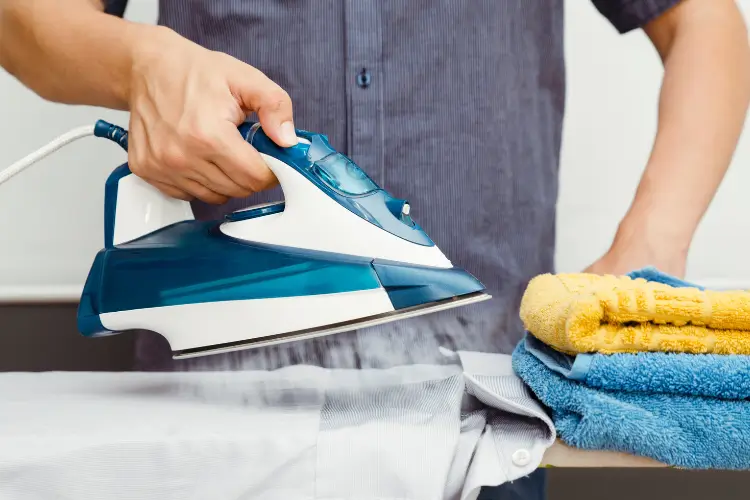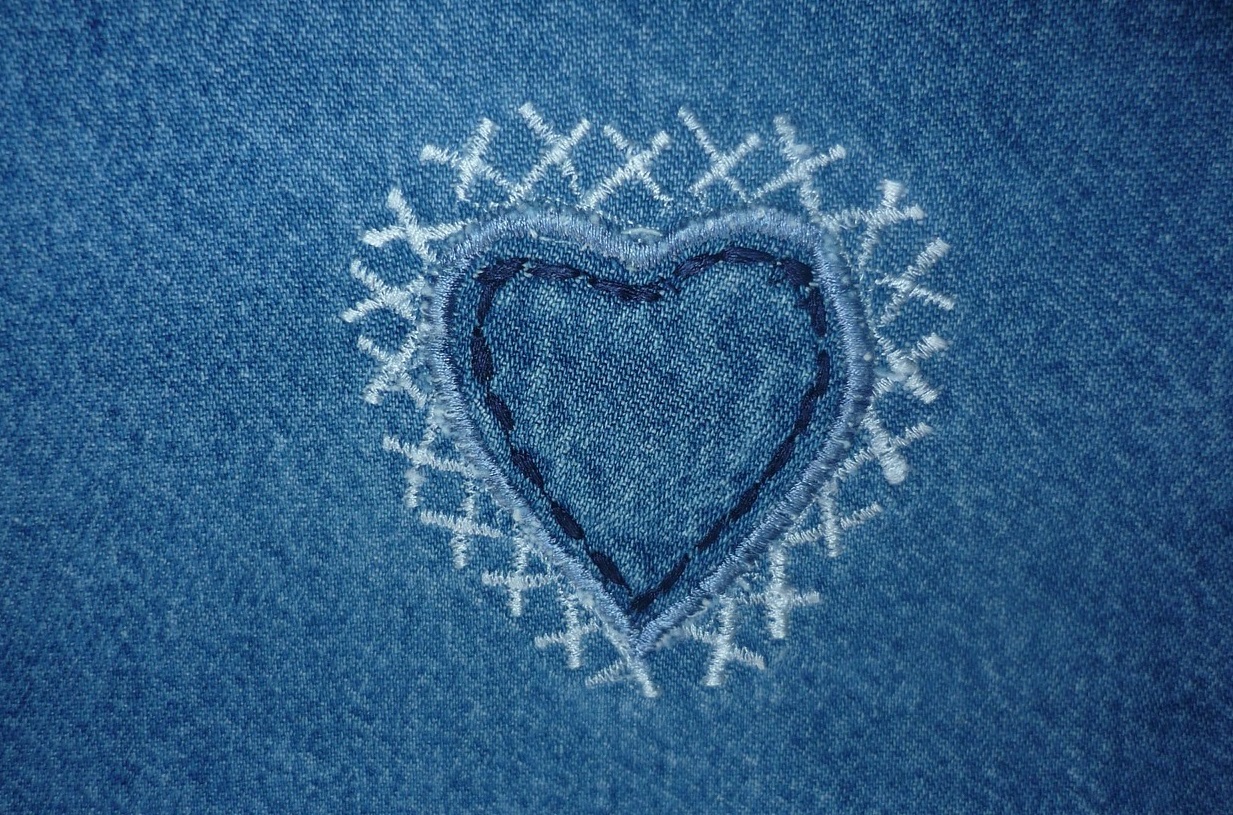Steam irons are ideal for tackling tough wrinkles, especially on fabrics like cotton, linen, and denim. They also add a polished look to clothes that tend to crease easily. But how to use steam iron effectively?
First, sort your garments by fabric type to ensure the right temperature settings. Fill the water tank with distilled water, and start ironing on an ironing board, using steam for those stubborn wrinkles. For delicate fabrics, use a pressing cloth to prevent damage.
After ironing, hang your clothes and empty the water tank to maintain your iron’s longevity. Follow the rest of this article for detailed tips and tricks to make the most of your steam iron.
Is Steam Iron Good or Bad for Clothes?
Steam irons are good for clothes, but there are some things to keep in mind. Using a steam iron for clothes can be beneficial, as it effectively removes wrinkles and gives fabrics a polished look. However, the benefits depend on how you use it and the type of fabric you’re working with. Let’s explore the factors involved to ensure you get the best results without damaging your clothes.
Fabric Type Matters
Different fabrics respond differently to heat and steam. Cotton and linen can handle higher temperatures and steam well. Delicate fabrics like silk and wool require a lower heat setting. Always check the care label to avoid damaging sensitive materials.
Proper Technique is Key
Using the right technique enhances the benefits of a steam iron. Move the iron smoothly over the fabric to avoid scorch marks. For delicate fabrics, use a pressing cloth to prevent direct heat contact. Proper technique ensures your clothes remain in top condition.
Maintenance of the Iron
Keeping your steam iron in good condition is important for effective ironing. Regularly clean the iron’s soleplate to remove any buildup. Empty the water tank after each use to prevent mineral deposits. Proper maintenance extends the life of your steam iron and ensures consistent performance.
Potential Risks to Consider
While steam irons are generally safe, improper use can lead to damage. Overheating the iron can cause fabrics to burn or discolor. Using tap water instead of distilled can result in mineral buildup. Following the manufacturer’s instructions minimizes the risk of harming your clothes
Types of Steam Iron You Can Use
The steam iron you choose can have a significant impact on your ironing experience. Different types of steam irons are suited to various needs and fabric types. Here’s a quick overview of the most common steam irons available, along with their unique features.
Standard Steam Iron
A standard steam iron is the most common option for everyday use. It features adjustable temperature settings and steam output. These irons are versatile and work well on most fabrics. They’re ideal for basic home ironing tasks.
Steam Generator Iron
Steam generator irons produce more steam than standard models, making them perfect for heavy-duty ironing. They have separate water tanks, allowing for longer ironing sessions. These irons are great for large loads of laundry. However, they require more storage space due to their size.
Cordless Steam Iron
Cordless steam irons offer greater mobility and ease of use. They’re heated on a base and then used without a cord. These irons are convenient for quick touch-ups and small spaces. The only drawback is that they need frequent reheating.
Travel Steam Iron
Travel steam irons are compact and lightweight, designed for on-the-go use. They’re small enough to fit in luggage. Despite their size, they offer decent steam power for quick fixes. Perfect for travelers who want wrinkle-free clothes while away.
How to Use Steam Iron?
Your ironing routine can be greatly improved by using a steam iron, resulting in a more efficient and faster process. You can easily achieve crisp, wrinkle-free clothes by following a few simple steps. To help you master the art of steam ironing, we have provided a step-by-step guide below:
Step 1: Sort Your Garments
Before you start ironing, separate your clothes based on the recommended ironing temperature. This step ensures you don’t accidentally damage delicate fabrics by using too much heat. Always check the care labels on your garments for specific instructions. Sorting also helps streamline the ironing process, making it more efficient.
Step 2: Prepare the Iron
Filling the water tank with distilled water is essential to prevent mineral buildup that can clog your iron. Adjust the iron’s temperature setting according to the fabric you’re ironing, ensuring optimal results. Wait a few minutes for the iron to reach the desired heat level before starting. Proper preparation is key to effective ironing.
Step 3: Use an Ironing Board
Place your garment on an ironing board or a flat surface with a cotton towel underneath. This setup provides a stable, heat-resistant area for ironing, ensuring smooth results. Begin by ironing the thicker fabrics first, working your way to the more delicate ones. Ironing on a stable surface prevents unwanted creases and promotes even heat distribution.
Step 4: Start Ironing
Move the iron in a smooth, up-and-down motion, following the natural folds and seams of the fabric. Press the steam button to release steam, which helps relax the fabric fibers and removes wrinkles more effectively. For delicate fabrics, use a pressing cloth to avoid direct contact with the iron. Consistent, careful movements ensure your clothes look polished and wrinkle-free.
Step 5: Finishing Up
After ironing, immediately hang your clothes to prevent new wrinkles from forming. This step allows the fabric to cool down without being disturbed, preserving the smooth finish. Don’t forget to empty the water tank after use to avoid any mineral deposits. Properly finishing up your ironing session helps maintain your iron’s longevity and keeps your clothes looking their best.
Using these simple steps will help you make the most of your steam iron, ensuring crisp, clean clothing Remember, proper preparation, technique, and finishing touches are key to achieving the best results.
Precautions You Need to Take While Using Steam Iron on Clothes
Steam irons can help you get wrinkle-free clothes, but you should take precautions to protect your clothing. You must actively avoid a few things to avoid damaging delicate fabrics and ensure your iron lasts longer. Here are some key precautions to keep in mind:
- Check the fabric care label before ironing. The label provides guidance on the recommended temperature settings to avoid damaging the fabric.
- Use distilled water in the steam iron. This prevents mineral buildup inside the iron, which can clog steam vents and damage your clothes.
- Adjust the temperature setting according to the fabric. Delicate fabrics require lower temperatures to prevent burns and scorch marks.
- Avoid using steam on delicate fabrics without protection. Use a pressing cloth to shield delicate materials from direct heat and steam.
- Never leave the steam iron unattended while on. It can cause accidental burns or damage if left in one place too long.
- Iron in a well-ventilated area. Proper ventilation prevents moisture buildup, which can lead to mold growth or damage to the iron.
- Store the steam iron upright after use. This prevents water from leaking and protects the soleplate from scratches and damage.
Tips to Help You Find a Suitable Steam Iron for Your Needs
Finding the right steam iron can make a significant difference in your ironing routine. With so many options available, choosing the best one for your needs can feel overwhelming. This guide will provide practical tips to help you select the perfect steam iron. Let’s explore the key factors to consider when making your decision.
Consider the Steam Output
Look for a steam iron with adjustable steam output settings. Higher steam output is ideal for heavy fabrics and stubborn wrinkles. For delicate fabrics, lower steam settings prevent damage. Choosing an iron with versatile steam control ensures it meets all your ironing needs.
Check the Water Tank Capacity
A larger water tank allows for longer ironing sessions without frequent refills. This feature is particularly useful if you often iron large loads of laundry. Smaller tanks may be more compact but require frequent refilling. Balance your needs with the tank size for a more convenient experience.
Evaluate the Soleplate Material
The soleplate material affects the iron’s glide and heat distribution. Stainless steel and ceramic are popular choices for their smooth performance. Non-stick coatings are also beneficial for preventing fabric sticking. Choose a soleplate material that matches your ironing preferences and fabric types.
Look for Safety Features
Safety features like auto shut-off and anti-drip systems are crucial. Auto shut-off prevents the iron from overheating if left unattended. Anti-drip systems prevent water from leaking onto fabrics, avoiding water stains. Prioritizing these features enhances safety and protects your clothes.
Consider the Weight and Ergonomics
The iron’s weight impacts its ease of use and comfort. Heavier irons provide more pressing power but can cause fatigue. Lightweight models are easier to maneuver but may require more effort for tough wrinkles. Opt for a design that feels comfortable and suits your ironing habits.
Last Words
Steam irons offer an effective solution for keeping your clothes wrinkle-free and polished. However, understanding how to use steam iron properly is crucial to avoid damaging delicate fabrics and to achieve the best results.
A steam iron that meets your specific needs can be found by considering factors such as fabric type, steam output, and safety features. Be sure to follow the maintenance tips and precautions recommended for extending your iron’s lifespan. With the right steam iron and proper techniques, ironing can become a smoother, more manageable task.




